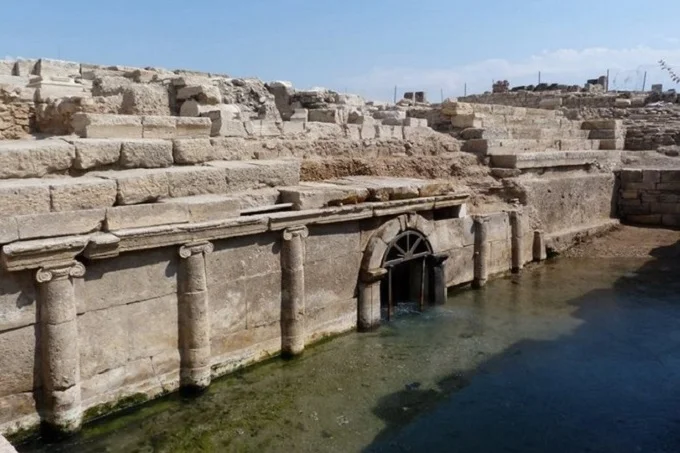The cave, which the ancient Romans regarded as a portal to the underworld, was so lethal that it killed any animals that entered it while leaving the priests unharmed.
Scientists have figured out the secret millennia later. A dense cloud of carbon dioxide was the source of the asphyxiation. The cave, which dates back 2,200 years, was found in 2011 by archaeologists from the University of Salento.
It was used to sacrifice bulls and was situated in the city of Hierapolis in ancient Phrygia (modern Turkey). It was known as the Pluto Gate, named for the deity of the underworld.
The spectators in the seats could witness as the priests led the bulls into the arena, and the smoke from the gate killed the animals.
“This area is filled with vapor, which is so foggy and thick that seeing the ground is almost impossible. Any animal that enters dies immediately. When I tossed the sparrows, they gave out their last breath and fell to the ground” Strabo, a Greek historian, wrote: (64 BC – 24 AD).
The team of archaeologists was alerted to the cave’s location by this occurrence. Birds flying too near to the cave’s entrance suffocated and died, showing that it is still dangerous thousands of years later.
According to volcanologist Hardy Pfanz of the University of Duisburg-Essen in Germany, Seismic activity beneath is to blame. The fissure, which runs deep below, produces huge quantities of volcanic carbon dioxide.
The researchers tested carbon dioxide levels in the cave’s arena and discovered that the gas had created a “lake” 40 centimeters above the arena floor. The Sun disperses this gas throughout the day, but it is most lethal at dawn after accumulated over the night. The concentration reaches more than 50% at the lake’s lowest bottom, although it quickly decreases beyond 40 centimeters.
Carbon dioxide is still present at up to 5 centimeters throughout the day, as demonstrated by the dead bugs on the arena floor. Because neither the light nor the wind can enter the cave, CO2 levels constantly fluctuate between 86 and 91 percent.
In their paper, the team mentions that there has always been a tourist frenzy surrounding the cave. Tourists could be sold small animals and birds to toss on the arena’s floor for sacrifice, while priests may sacrifice bigger creatures on feast days.
The priests always stood erect, keeping their nose and mouth far above the poisonous level of the Hadean breath of death, while the bull stood in the gas lake with his mouth and nostrils between 60 and 90 cm high.
Onlookers watched the large, powerful bulls die in minutes while the priests remained strong and alert, and they saw this as proof of the gods’ and priests’ strength.
The priests were fully aware of the grotto’s and arena’s characteristics, according to researchers, and conducted large sacrifices around dawn or twilight on windless days for optimum impact. They might even enter the cave or put their heads inside during noon rituals to show their strength by holding their breath.
